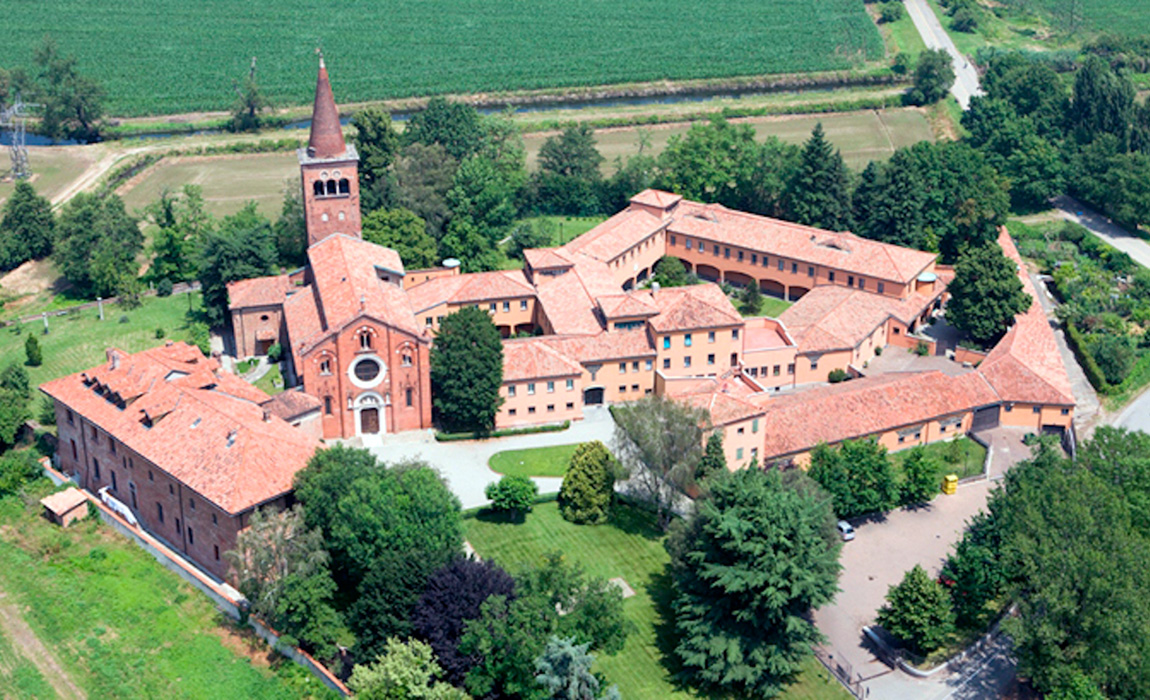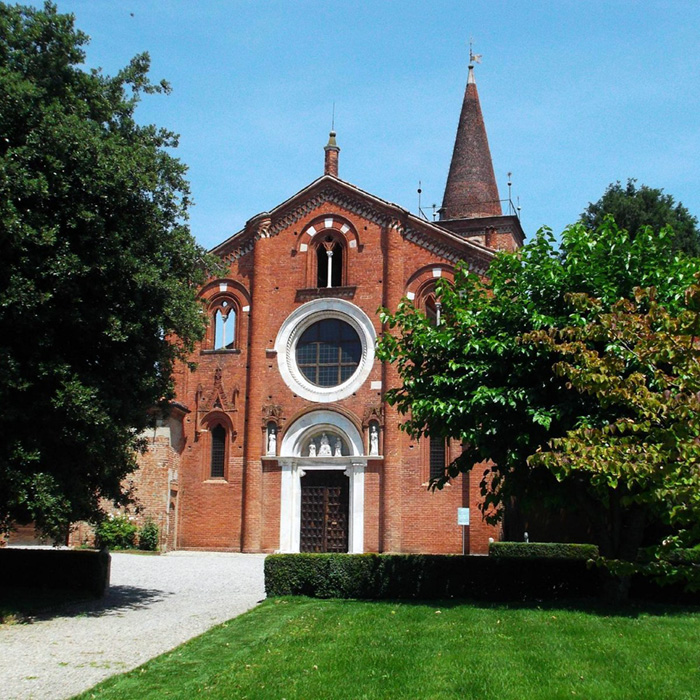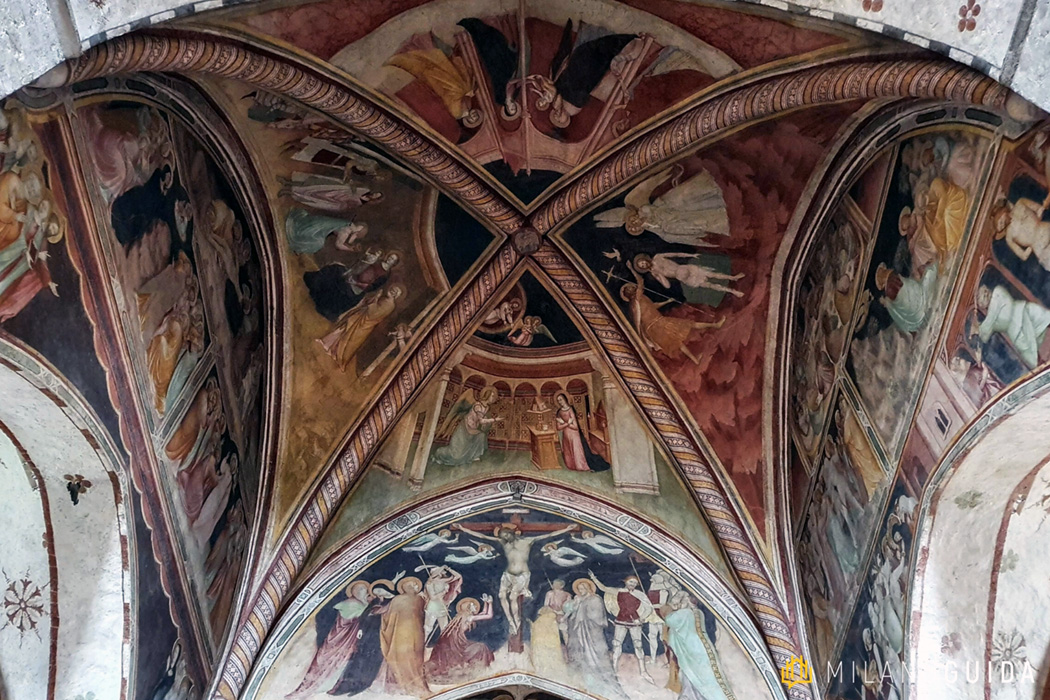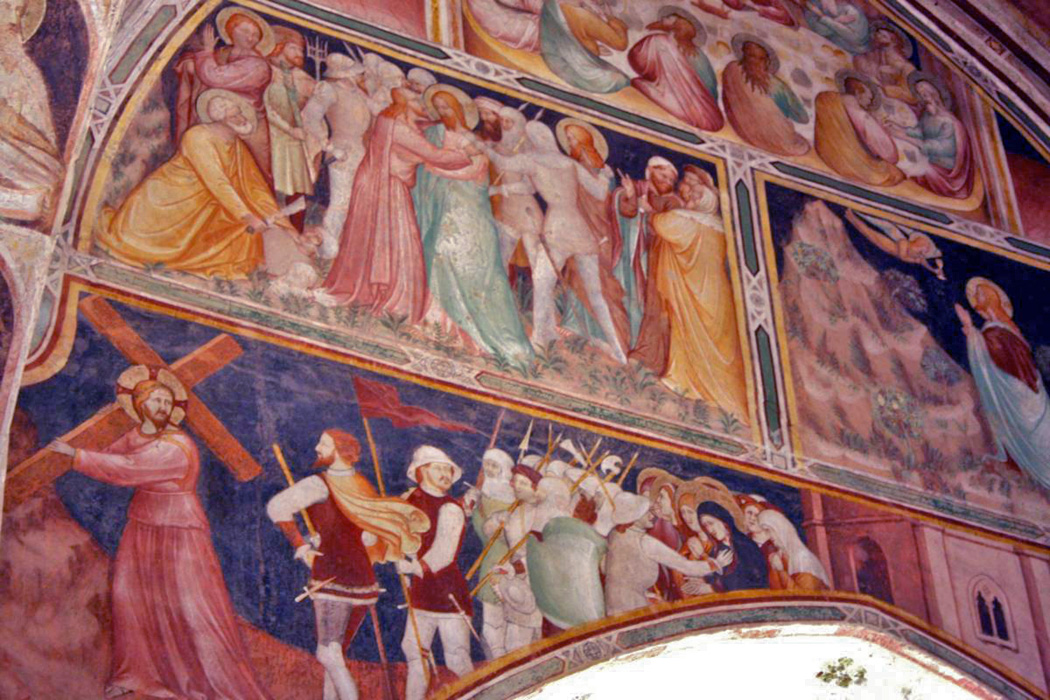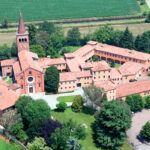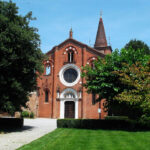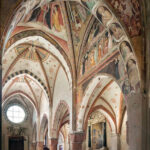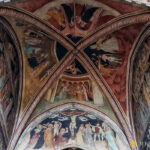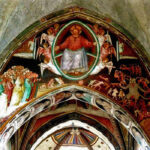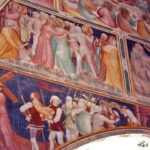San Giuliano Milanese – The Abbey of Viboldone
The Abbey of Viboldone was founded in 1176 and completed in 1348 by the Umiliati, a religious order composed of monks, nuns, and laypeople who lived a life of prayer and work, particularly in the production of woolen cloths and innovative methods of farming. After the suppression of the Umiliati by Carlo Borromeo, the abbey passed to the Olivetani Benedictines, who were later suppressed by the Austrian government and forced to abandon the abbey.
In 1940, Cardinal Ildefonso Schuster, after years of neglect, offered the abbey to a community of nuns led by Margherita Marchi, who had separated from the congregation of the Benedictines of Priscilla. The Benedictine monastery of Viboldone was canonically erected on May 1, 1941: the nuns produce jams and, since 1945, have carried out an important religious and theological publishing activity, in addition to their strictly monastic commitments.
The façade is characterized by its gable roof with open dormers reaching towards the sky, with brickwork visible and divided by two semi-columns with decoration in white stone. The white marble portal is decorated with marble sculptures of the Madonna and Child with the saints Ambrogio and Giovanni da Meda, by the sculptor Master of the Viboldone sculptures. Two Gothic niches on the sides enclose the statues of Saints Peter and Paul. The church door is made of dark wood, decorated with large wooden ribs and big nails, dating back to the time of the construction of the façade. There is a small door incorporated into it that is used for entering the church.
The bell tower is original, with a conical shape above the church’s crossing, according to the Cistercian tradition. It recalls the chromatic and decorative system of the façade, with terracotta cornices and arches at the base of the dormers and triforia topped by round windows. The architectural elements inside the church are almost bare except for the painted decoration, which covers the interior with light and color.
The church layout is a rectangular hall with three aisles of five bays each, framed by pointed transverse arches. The first bay is in Romanesque style, while the others, built during the thirteenth century, are in a Gothic style with terracotta columns supporting high ribbed vaults. The keystones at the center of the cross-ribs are surrounded by segments enclosed in a circle, with the colors of the rainbow, a sign of God’s friendship with people. The columns dividing the naves are made of brick with square-cut capital cubes.
The church welcomes numerous and famous frescoes, works of the Giottesque School. On the front wall of the crossing is the Madonna in Majesty and Saints, directly dated to 1349. On the opposite wall is the Universal Judgment by Giusto de’ Menabuoi, which could date from the years immediately preceding 1370 (although some scholars lean towards a date near 1350); in its center, enclosed in the iridescent mandorla, is the sweet figure of Christ, to His right are the “blessed” with their faces turned towards the Judge, and to His left are the “condemned,” over whom the figure of Satan towers as he devours his prey. On the upper half of the wall, two angels are intent on rolling up the time of history, revealing the background of the heavenly Jerusalem.
On the first floor of the building that adjoins the church, overlooking the square with two windows, is the Music Room, a singular iconographic testimony of the musical instruments in use in Milan between the end of the fifteenth century and the first years of the sixteenth century. The frescoes preserved within it depict a portico, where fluted pilasters divide twelve windows that contain all kinds of musical instruments in red monochrome with black shading and ocher-colored shadows on a white background. The life-size instruments are arranged in crossed pairs according to a trophy scheme that highlights the centrality of the image, the symmetry, and the gravity-free typical of the grotesques. Nothing or almost nothing remains of the ancient monastery.

